Choosing Your Lenses
Choosing your Lenses
So you have had your eyes tested and have an up-to-date prescription. We suggest having a look at our Understanding your Prescription section first.
Lens Type
There are six basic types of lenses that are suitable for different purposes.
Single Vision Lenses
These have a single focal length and may be set for distance, reading or intermediate use.
Multifocal lenses
These have more than one focal length and may be subdivided into bifocal, varifocal and office-type lenses.
Distance
If you are under 40ish this will be your only prescription and will do everything including reading. If you are over 40ish then your distance prescription will be for anything further away than arms length. This includes driving and TV.
Reading
Your prescription will have a near vision/reading addition. Please ensure you enter this correctly when you order your spectacles. These spectacles are designed to work at close distances and are typically set with a working distance of 35-50 cm. They are not suitable for driving, but they will generally work well with a computer unless you have an intermediate addition.
Intermediate
Your prescription will have an intermediate addition which may have been written by an optician as a computer add or music add, depending on what you discussed in the sight test.
It will be lower power than your reading glasses and allow you to see at a longer working distance than your readers, but it is unsuitable for driving. You may also struggle with tiny print, but they allow you to easily see average-sized print and your computer/laptop/tablet/music stand.
Bifocals
As the name suggests, bifocals have two distinct areas with two different focal lengths, generally distance and reading. If you want distance and intermediate, enter the intermediate add when prompted during the order process.
You will need a deep enough frame to get the lenses into, but most frames are deep enough. We have tried to limit the lens choices on unsuitable frames, so if you cannot select a bifocal lens, the frame is too shallow.
Standard Bifocals
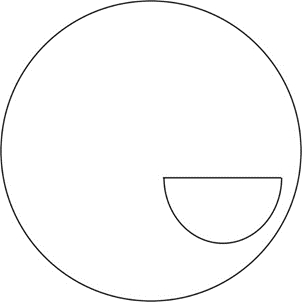
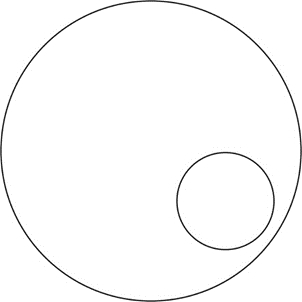
Wider Bifocals
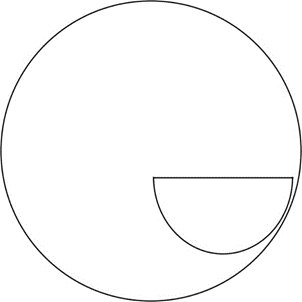
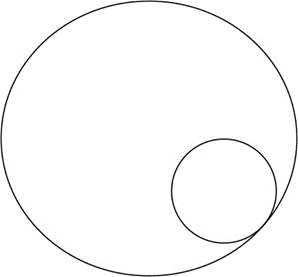
Executive Bifocals
However, there are drawbacks, the lens will be thicker than usual, often a lot thicker, the line is very obvious, and they only come in standard plastic as a clear lens. We can only fit them into a full frame, not a supra or rimless mount.

Varifocals
For simplicity and to give the best possible value, we offer three grades of the varifocal lens, Standard, Better and Best.
All varifocals work similarly: the lens’s distance portion is at the top. This is so you can see to drive, watch TV and generally walk around comfortably.
Where they differ from distance or reading lenses is that they have a specially worked corridor which gradually increases the plus power of the lens from top to bottom so that towards the bottom of the lens, you are looking through your reading prescription.
As this is a blend of power, you will pass through all focal lengths from distance to intermediate to near.
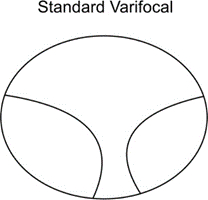
However, all varifocals are not the same. There are hundreds of designs out there, all offering slightly different things. In general, though, two principles hold. The newer the design, the wider the intermediate and reading sections will be. As you might expect, this also means that the more expensive the lens, the better it will be and, consequently, the easier it will be to use.
We’ve selected our standard varifocals to give you the best performance possible for the best price. In most cases, they will work perfectly well; from previous experience, we had great results with these lenses. I started off wearing Standard Varifocals with an anti-reflection coating. They work perfectly well for most purposes but as I spend quite a lot of time on a computer I have upgraded to the Better Varifocals as these give me a wider field of view for the computer. I have kept to the Standard Varifocals for sports as I just need to be able to see a watch or bike computer.
Our better lenses use a newer, slightly softer design that gives a wider field of view for reading. These are what are generally referred to as Digital Freeform Varifocal lenses.
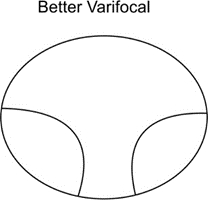
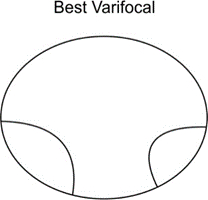
We currently do not offer personalised varifocal lenses online as we feel we cannot undertake the extra level of fitting and measurements that these lenses require without seeing the frame on you. We can offer these locally as we can take the extra measeurements these require. From personal experience, we can also say that the additional benefits are currently small compared to the best freeform lenses on the market, but the price is significantly higher.
Office Lens
These are lenses designed primarily for office/desk work. They work similarly to varifocals but do not have a distance portion. They have a wide intermediate section at the top and a wide near section at the bottom. These are ideal if you spend a lot of time using a computer, and they are not suitable for driving.
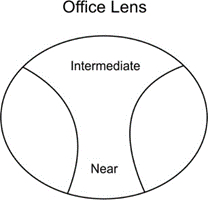
Lens Coatings
All our frames come as standard with CR39 plastic lenses, the primary material from which most modern spectacle lenses are made. We no longer use glass lenses unless you specially request them.
Standard plastic lenses are reasonably robust and are unlikely to break if dropped; however, they can be scratched if you aren’t careful with them.
Scratch Resistant Coating
This thin layer of transparent plastic made from tougher material coats both sides of the lens, making them more difficult to scratch. Please be aware that these lenses are scratch-resistant but not scratch-proof, as sadly, there is no such thing.
Anti-Reflection Coating
When light strikes a refracting surface, such as a spectacle lens, most light passes through the lens, but a small amount is reflected back. This reduces the amount of light getting to the eye. An anti-reflection coating allows nearly all incident light to pass through the lens.
Typically a standard lens reflects 10-12% of the incident light, and with an anti-reflection coating, less than 1% is reflected.
It works by using destructive interference with the light wave. The coating is 1/4 of the thickness of the wavelength on which it operates. There are many layers of coating which work on different wavelengths. Sounds complicated, doesn’t it?
Actually, it’s very clever science and what it means is that your lenses are clearer, which allows them to work better in low-light conditions.
They are particularly good at reducing glare from car headlights and computer screens. They look better, too, as everyone else can see through the lens to your eyes. These include a scratch-resistant coating as standard.
This coating is standard on all thinner lenses.
Premium Anti-Reflection Coating
All the benefits of a scratch-resistant coating, and an anti-reflection coating but with a super slippery hydro/oleophobic coating too. This is water and oil repellent so rain tends to bead and run off the lenses. Also, as they are more slippery, they are more difficult to scratch. Simply the best.
NOT ALL COATINGS ARE AVAILABLE ON ALL LENSES
We will advise you if you have chosen an incompatible combination.
Executive Bifocals are only available with standard or scratch-resistant lenses.
Lens Colour Options
We supply clear lenses as standard, but most tints are available on standard lenses.
Please note that we cannot supply tints other than those specified on thinner lenses.
1.74 index lenses are not available with tints or Photochromic lenses. Polarised Lenses are only available on standard or 1.6, or 1.67 index lenses and not on Bifocals or Office Lenses.
WE WILL ADVISE YOU IF YOU HAVE CHOSEN AN INCOMPATIBLE COMBINATION.
Photochromic Lenses
They are commonly referred to by the defunct brand name of Reactolite or as Transitions lenses. Transitions is also a brand name, but the generic term is photochromic. They react to the UV light level and go dark in the sun. Almost clear indoors, they are a great all-round lens. They are as good as sunglasses outside and fade gradually back to clear when you come indoors.
However, they do not work in the car as the windscreen cuts out most of the UV light hitting the lens. If you want dark lenses for driving, you would be better off with sunglasses (or a convertible). By default, they are 100% UV protected.
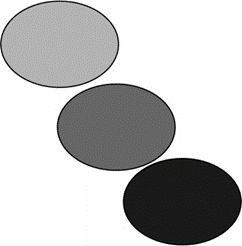
Tint Colours
Our three standard tint colours are the ones most used by sunglass manufacturers worldwide. All are UV protected and are great options for your new sunglasses. They are tinted to absorb 85% of the incident light so that only 15% reaches your eyes.
In general, it is best to choose a tint that matches the frame; brown makes things look redder and warmer, and grey makes things look bluer and cooler. G15 is the most neutral tint used by Rayban in its legendary aviator sunglasses.
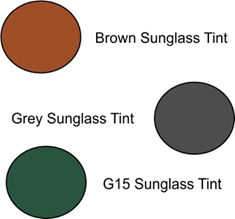
Grade 1 = Pale Tint, which cuts out 10-15% of the light. (This is the only tint suitable for night driving.)
Grade 2 = Fashion Tint, which cuts out 25-30% of the light. (Not suitable for night driving)
Grade 3 = Medium Tint, which cuts out 50% of the light. (Not suitable for night driving)
Grade 4 = Sunglass Tint cuts out 85% of the light. (Not suitable for night driving)
We will not supply lenses darker than this as they are too dark for driving and only suitable for mountain conditions.
All Grade 2 and darker tints are supplied with a 100% UV coating.
Graduated Tints
These lenses are darker at the top than at the bottom. Designed to mirror the natural shade you get from your eyebrows and help you read by looking through the clearer part at the bottom of the lens.
Choose a colour and specify how dark you would like the lens at the top using the grading system above. (If no grade is selected, we will supply a dark tint at the top as you would find in a sunglass.)
Please note: a grade 1 graduated tint is not worthwhile.
Specifying a graduated tint with an anti-reflection coating will take an extra 5-7 working days, as the anti-reflection coating can only be applied after the lens has been tinted.
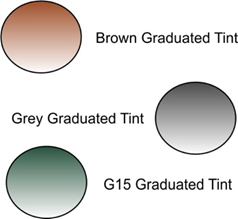
Other Tint Colours
We can do Pink, Blue, Yellow or Green, and we can achieve other colours by mixing the above. Please specify what colour tint you would like in the comments box on the order screen.
Use the grading system above, but most other tints will not go as dark as our standard tints. Usually, we can only achieve a Medium Grade 3 at the darkest point.
Graduated tints are also available.
PLEASE NOTE: WE CAN ONLY DO OTHER TINT COLOURS ON STANDARD-THICKNESS LENSES.
We will inform you if you have chosen an incompatible combination.
Polarised Lenses
Polarised lenses help reduce glare and the amount of incident light. They are brilliant at removing glare from a wet road or the sea. Recommended for watersports or any outdoor activity such as running, cycling or driving. (One note of caution, polarised lenses can make some LED displays hard to read.) Much nicer to wear than a standard tint.
Only available in a sunglass tint in Grey, Brown or Geeen and on most but not all lens types. They are not suitable for night driving.
Lens Thickness
Standard Thickness n=1.50
All our lenses are plastic, and glass lenses are very rare nowadays. Plastic lenses are shatter-resistant, making them safer and about half the weight of the equivalent glass lens. If you would like glass lenses, don’t hesitate to get in touch with us at sales@favershamoptical.com
Standard plastic lenses are made of a material called CR39 and are generally lightweight and optically free from distortion. However, they scratch quite easily if you aren’t careful with them, so they may benefit from a scratch-resistant coating.
We will supply standard lenses unless you specify another option.
In general, if the Sphere value of your prescription is lower than +/-4.00D, standard lenses will be fine. For higher prescriptions, we recommend a thinner material to improve the cosmetic appearance and reduce weight.
See the table below.
Mid Index n=1.60
“n” refers to the refractive index of the lens material, the bigger the number, the more the light is refracted at each surface and the thinner the lens can be.
Most lenses of this thickness and thinner are supplied with an anti-reflection coating as standard, as the surface is naturally more reflective, which makes the lenses appear unattractive.
These lenses are approximately 25-30% thinner and lighter than standard lenses.
In general, if the sphere value of your prescription is between +/-2.50D and +/-6.00D, these are good lenses to choose.
High Index n=1.67
These lenses are thinner than 1.60 and not quite as thin as 1.74. A good option for prescriptions from +/-4.00D to +/-8.00D.
Some lens types are not available in this thickness lens, including some bifocal types, and most tints are not available.
Very High Index n=1.74
The thinnest lenses available in plastic. Recommended for prescriptions higher than +/-5.00D
Photochromic lenses or tints are unavailable in this material, and other lens options are limited. Standard varifocals, all bifocals, and office lenses are not available in this material.
| Sphere Value (D) | Standard Index n=1.50 | Mid Index n=1.60 | High Index n=1.67 | Very High Index n=1.74 |
| +/-1.00 | Recommended | |||
| +/-2.00 | Recommended | |||
| +/-3.00 | Recommended | Option | Option | |
| +/-4.00 | Option | Recommended | Option | Option |
| +/-5.00 | Option | Option | Recommended | Option |
| +/-6.00 | Option | Recommended | Option | |
| +/-7.00 | Option | Recommended | ||
| +/-8.00 | Option | Recommended | ||
| +/-9.00 | Recommended | |||
| +/-10.00 | Recommended |
Most lenses are available in all prescriptions up to +/-10.00D, but a +/-10.00 lens in standard plastic will be very thick and heavy, so it is not recommended.
Prescriptions over +/-10.00D are available, but due to the more complicated nature of these complex prescriptions, please get in touch with us for advice first.
If you select an incompatible combination, we will contact you and offer some alternatives. We cannot restrict options other than lens type due to how the website architecture works.
Sorry for any inconvenience this may cause.